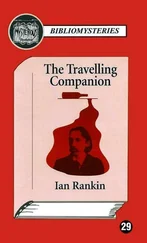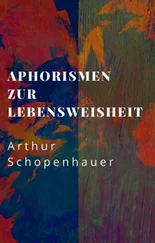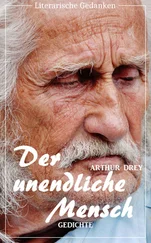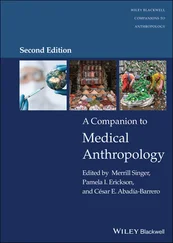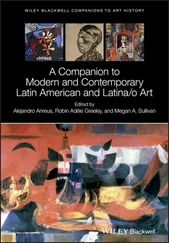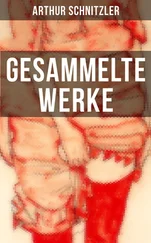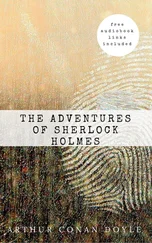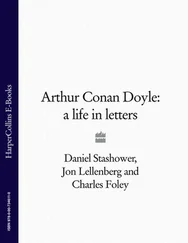A Companion to Arthur C. Danto
Здесь есть возможность читать онлайн «A Companion to Arthur C. Danto» — ознакомительный отрывок электронной книги совершенно бесплатно, а после прочтения отрывка купить полную версию. В некоторых случаях можно слушать аудио, скачать через торрент в формате fb2 и присутствует краткое содержание. Жанр: unrecognised, на английском языке. Описание произведения, (предисловие) а так же отзывы посетителей доступны на портале библиотеки ЛибКат.
- Название:A Companion to Arthur C. Danto
- Автор:
- Жанр:
- Год:неизвестен
- ISBN:нет данных
- Рейтинг книги:5 / 5. Голосов: 1
-
Избранное:Добавить в избранное
- Отзывы:
-
Ваша оценка:
- 100
- 1
- 2
- 3
- 4
- 5
A Companion to Arthur C. Danto: краткое содержание, описание и аннотация
Предлагаем к чтению аннотацию, описание, краткое содержание или предисловие (зависит от того, что написал сам автор книги «A Companion to Arthur C. Danto»). Если вы не нашли необходимую информацию о книге — напишите в комментариях, мы постараемся отыскать её.
Companion
A Companion to Arthur C. Danto
A Companion to Arthur C. Danto — читать онлайн ознакомительный отрывок
Ниже представлен текст книги, разбитый по страницам. Система сохранения места последней прочитанной страницы, позволяет с удобством читать онлайн бесплатно книгу «A Companion to Arthur C. Danto», без необходимости каждый раз заново искать на чём Вы остановились. Поставьте закладку, и сможете в любой момент перейти на страницу, на которой закончили чтение.
Интервал:
Закладка:
One can’t help but wonder, though, what Arthur would make of today’s art world. The market has continued to boom beyond all expectations. Ideas and critical debate often take a back seat to prices. Excitement about art’s interactions with popular culture has been overtaken by anxiety that the art world is turning into a minor outpost of the entertainment industry. This is the post-historical art world in its full efflorescence. Despite all that, my guess is that the bling and glam that surround today’s art scene aren’t what would rattle Arthur. The 1980s and 1990s art world that he documented and lived, after all, was plenty commercial, especially compared to what he had seen back in the 1950s. I think what would irk him is the well-nigh impossibility of making any historic breakthroughs.
Not long before Arthur died, the curator and writer Hans Ulrich Obrist and I conducted a series of interviews with him, which offered a window into his thinking late in life. “I’m not excited about the current moment, I must say,” Arthur allowed, near the end of our conversations. “The amount of liberation that’s available to artists today is unbelievable,” he went on. “But I think about moments like when Philip Guston, in 1970, at the Marlborough Gallery, was showing the Ku Klux Klan figures, and people said, ‘This is not art!’ And de Kooning comes over and gives Philip Guston a hug and tries to reassure him that it’s art, while everyone else was saying that it wasn’t.” 3
The blessing and the bane of our current moment in art is that there are no longer any lines to cross. All the rules have been shattered. All the parameters and perimeters have been blurred. Anything can be art – and no one wrote with more poignancy about this vexed situation than Arthur. His great fortune was to have lived at a time when boundaries were still there for the crossing, when it was still possible to say, “This is not art.” But along with the liberating evaporation of boundaries comes an inescapable melancholy about their absence. On balance, Arthur had exquisite timing. Ennui was a small price to pay for bearing witness to art’s epic turning point.
4 Art History Ended in My Garden
As should be clear by now, it is impossible for me to write about Arthur Danto without touching upon our personal friendship, which outgrew our intersecting professional interests. We shared a lot, beyond our love of art and our interesting birthdays – January 1, set apart by four decades – and names that rhymed.
On a sunny May afternoon in a Los Angeles garden, years after I first knocked on his office door, Arthur delivered a speech at my wedding – a speech that was subsequently published in an essay titled “Philosophers and the Ritual of Marriage” (Danto 2008, 7–14). In what must have come as a surprise to some of the assembled, he canvassed the history of philosophy to search for an answer to a question that my future wife – who by happenstance had studied philosophy – and I had posed to him in preparation for the ceremony, namely: Why would two free individuals, unencumbered by custom, economics, or religion, enter a binding relationship of a kind that marriage represents? Socrates, Leibniz, Kant, and of course, Hegel were among those cited. The essay is rarely quoted, so I share the gist here:
Even as an Aristophanic whole, engaged in a Odyssian form of the connubially connected life, wedding is a social act, fraught with meanings. We want most immediately to give those we love – family and friends – a symbolic participation in our evolving condition – and the ceremony of wedlock transforms the company into symbolic union with ourselves. It is an acknowledgement that we do not because we cannot in the end live for ourselves alone. It admits some wider relevant society into our happiness, and creates through ceremonial enactment an entity larger than ourselves (Danto 2008, 13).
True to form, Arthur made the essay another opportunity to opine about boundary lines that fence off the ordinary from that which is more meaningful. In any event (as Arthur would say in moments of transition like this), the wedding was not the end of our story. A closeness developed between our families. Arthur and his wife, Barbara, took a keen interest in our children, which is how we learned that the Johnsonian Professor Emeritus of Philosophy at Columbia University had considered opinions on each of the Harry Potter novels, which he had eagerly read.
What continues to link us even after his passing, in the most tangible way, is Arthur’s former weekend house, in Brookhaven Hamlet, Long Island. He was deeply attached to this hideaway, which he had bought for a song in the early 1970s. It is where he wrote, voted, and thought. He even worked to help the area get a historically protected designation. He developed friendships with people in the neighborhood, including scientists from the nearby Brookhaven National Laboratory. He took walks to the Carmans River Estuary, at the end of the street, and on sunny days would drive out to the ocean beaches at Smith Point Park. For some reason, my wife and I were entrusted with the care of the modest cottage for periods of summertime house-sitting. When Arthur’s physical condition frayed as he reached his eighties, it was no longer feasible for him to use the house, and he offered it to us to buy. The house and its garden have since become the anchor of my own family. Much of what is good about our lives happens there. It is where we feel we are “an entity larger than ourselves.”
Arthur had converted a garage on the property into a writing studio. He installed a skylight and hung a Chinese print. This is where he wrote some of his most seminal works, including The Transfiguration of the Commonplace , and various texts in which he put forward his theory of “the end of art.” The humble shed was a launching pad for ideas that left a lasting mark on our world. I take occasional delight in telling my friends that art history, so to speak, ended in our garden.
Notes
1 1 Stephen Sifaneck, who passed away in 2013, at age 46, was my collaborator on the documentary.
2 2 American Society for Aesthetics, “1996 Annual Meeting.” At http://aesthetics-online.org/?page=report1.
3 3 András Szántó and Hans Ulrich Obrist, interview with Arthur Danto. Unpublished manuscript.
References
1 Danto, Arthur C. 1991. “Max Neuhaus: Sound Works.” The Nation, March 4.
2 ———. 1997. “The End of Art.” In After the End of Art: Contemporary Art and the Pale of History. Princeton, NJ.
3 ———. 2008. “Philosophers and the Ritual of Marriage.” In Think, a Periodical of the Royal Institute of Philosophy, 17–18.
3 Writing with Style
ARTURO FONTAINE
Danto had style, a good style. When I make this aesthetic judgment, I’m sure I am right, although justifying my claim is another matter. We cannot define what good style is, yet we know it when we see it. Danto was engaged with questions of style all his life, as a philosopher and as an art critic. The last chapter of his book The Transfiguration of the Commonplace is devoted to metaphor, expression, and style. It is as if his whole exploration of the concept of a work of art culminates with his reflections on the nature of style. Hemingway said he had tried 39 versions of the final words of his novel Farewell to Arms . Asked why by Paris Review interviewer, George Plimpton, his famous response was: “getting the words right.” As a novelist myself, I’m absolutely sure that whether a page has life or not is a question of finding the right words. Why is style so crucial?
When I say that Danto had also a distinctive style – as I hope my samples of his writings will show – this does not mean that he wanted to erase the frontier between philosophy and literature. Philosophy is concerned with truth in an altogether different way than literature is, and Danto believed it important to maintain this distinction. Derrida’s alleged proposal – to read philosophy, the whole history of philosophy as literature – is, as Danto wrote, like visiting “a museum of costumes we forget were meant to be worn” (Danto 1986, 160).
Читать дальшеИнтервал:
Закладка:
Похожие книги на «A Companion to Arthur C. Danto»
Представляем Вашему вниманию похожие книги на «A Companion to Arthur C. Danto» списком для выбора. Мы отобрали схожую по названию и смыслу литературу в надежде предоставить читателям больше вариантов отыскать новые, интересные, ещё непрочитанные произведения.
Обсуждение, отзывы о книге «A Companion to Arthur C. Danto» и просто собственные мнения читателей. Оставьте ваши комментарии, напишите, что Вы думаете о произведении, его смысле или главных героях. Укажите что конкретно понравилось, а что нет, и почему Вы так считаете.

